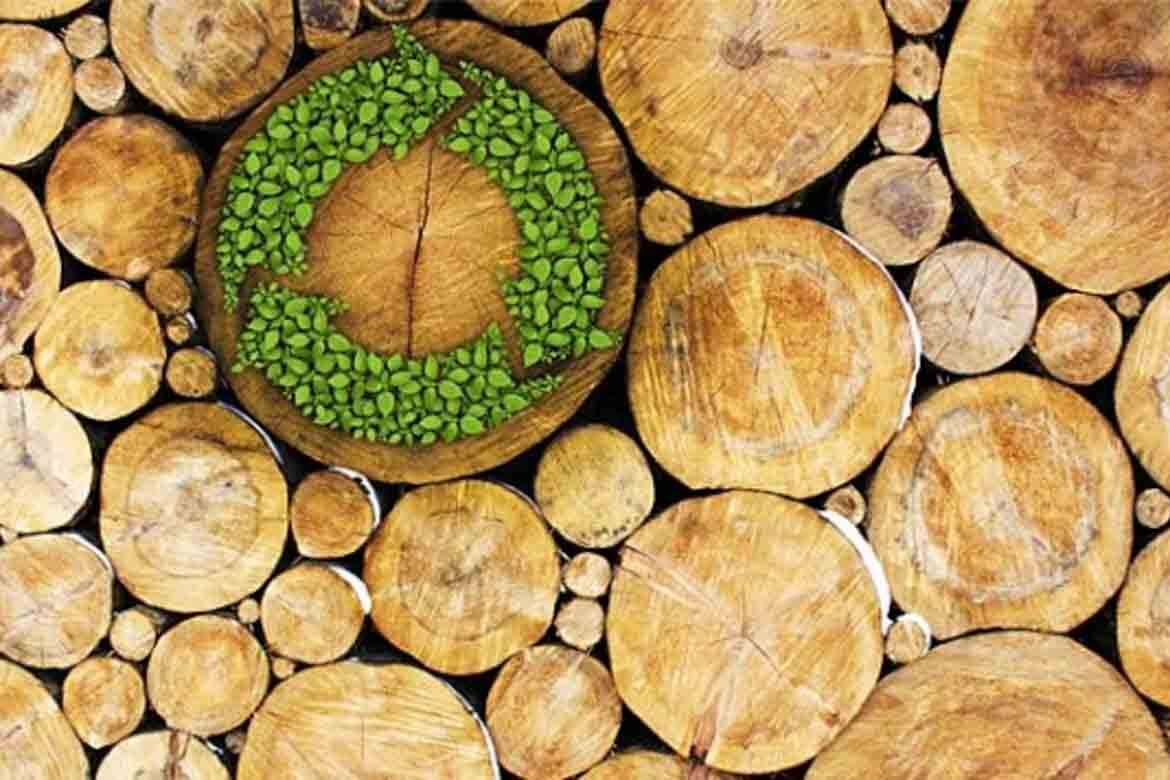
Sustainable timber is forging the path for reclaimed building materials in a modern, climate conscious society.
What is timber?
Story continues below advertisement
It is difficult to find one all encompassing phrase that might define sustainable timber. In the narrowest sense, and certainly for the Australian timber industry, sustainable timber refers primarily to timber which has been harvested responsibly.
This usually means that the timber was taken from an environmentally-managed forest – often mandating the replacement of every felled tree with a sapling planted in its place – with respect to the ecological complexities of the native flora and fauna. Sustainably harvested timber does the least damage possible to the environment and is therefore one of the best ways to ensure that your home or renovations are future-proof and ethical.
However, if we try to understand timber sustainability in a broader sense one might come to include other eco-friendly timber building practices, such as the production and distribution of reclaimed timber. Recycled timber, reclaimed timber, and sustainable timber are all terms which draw attention to the same feature: low environmental impact. For this reason it is hard to completely define sustainably harvested timber, as there are a huge variety of approaches to climate-conscious construction.
Story continues below advertisement
In Australia, sustainable timber in the harvesting sense is regulated and measured in by three main organizational bodies. These bodies provide schemes and guidelines for sustainable forestry that outline the measures needed in order to gain sustainable timber certification.
The first resource in Australia responsible for aiding sustainable timber manufacturers is the Australian Forest Certification Scheme, which monitors timber products throughout all levels of production. The AFCS tracks timber products from the initial harvest all the way through to their purchase, providing a Chain of Custody Standard that customers can consult before making their timber supply decisions. You can read more and review their database of certified responsible wood manufacturing companies here.
Story continues below advertisement
The second resource created to aid timber harvesters and manufactures is the Programme for Endorsement of Forest Certification, an international non-government organisation which provides independent certifications for sustainable forestry. This program is excellent for its specificity, as it adjusts every natural forest sustainable harvesting plan to the individual circumstances of the environment.
Finally, there is the Forest Stewardship Council, which issues certifications to forests that meet the global standards for standard sustainable forest principles. You can read more about their practices, projects and the guidelines to become FSC certified here.
Where does timber come from?
The majority of timber in Australia (over 1/3 of all softwood timber) comes from NSW plantations of exotic species such as Radiata Pine or Cypress Pine.
How is timber made?
Felled trees are shipped to a timber sawmill and debarked. The remaining wood is then divided into appropriately sized timber pieces and sent for refinery, treatment and distribution.
Is timber sustainable? / Is timber renewable?
Sustainable forestry is one of the most promising global investments, for various environmental, social and economic reason. Responsibly manufactured timber actually helps to reduce the production and presence of greenhouse gases, limiting the effects of climate change.
On an individual level, manufacturing timber sustainably actually helps to boost local economies and avoids the development of one manufacturing entity holding a monopoly over global supply. It also improves the surrounding ecosystem and can help to maintain air quality, soil fertility, and water quality.
Making sure to only buy sustainable timbers is one small way to make a big difference. It is one of the most ethical building materials in existence, especially considering that timber can also be recycled or renewed. Read on for a comprehensive overview of the 5 best sustainable timber products and their application in homes across Australia.
3. Go Natural Timbers
Go Natural Timbers is one of the most celebrated timber supply companies in Australia, from Cairns to Tasmania. Go Natural acquires all of its timber from local NSW and Australian sources, milling from re-claimed timber logs, fallen trees, or environmentally friendly approved urban tree removals. Even the excess product is put to use, often repurposed as firewood, sawdust, or other timber product.
Go Natural Timbers are best put to use as a feature of a room rather than an innocuous structural or understated exterior. This is because the raw beauty of Go Natural Timbers captures the attention of a room. They hold a huge variety of timber types, but the most popular styles are Gum (Blue, Red and Spotted), Iron Bark, Mahogany, Blackbutt, Lemon, and Blackbutt timbers. Contact here for a quote.
2. Nature Wood Timbers
Naturewood is a Queensland timber distribution company with delivery all across Southeast QLD and Northern NSW. All of their timber products are sustainably sourced, environmentally friendly and treated with their specific custom formulas.
Naturewood provides a diverse range of timber styles, stocking both structural and landscaping timbers. This makes them the ideal choice for a large-scale timber jobs such as fencing, external cladding, remodelling or laying foundations. You can request a quote and read more about their services here.
1. Nullarbor
Nullarbor is perhaps the most well-established sustainable timber supplier in Australia. They have been operating for the past 35 years, taking huge strides in the Australian sustainable construction industry to popularize both recycled and sustainable timber products.
They are known for their wide variety of applications, with their products often being the first choice material for timber flooring, decks, patio, cladding, structural beams or posts, and many more.
They specialise in Australian Hardwoods. Some of their most popular types and styles include; Gum (Red, Blue and Spotted), Ironbark, Merbau, Oregon, Messmate, Blackbutt, Tasmanian Oak, and many more. See here for a quote and further information about currently available styles.